8 Simple Tips for Grocery Shopping on a Budget

One of the things I love about frugal living is that it forces you to get creative and challenge yourself.
Since, we cannot eliminate food from our lives because we literally need it to live, we have to employ a variety of strategies for grocery shopping on a budget.
Here are eight ideas for how to maximize your grocery budget.
1. No-spend days
One of the ways to spend less on groceries is to have actual no-spend days. Just challenge yourself to have days where you rely solely on what is already in your pantry and refrigerator.
This encourages creativity in the kitchen and helps you to use up ingredients before they go bad, effectively reducing food waste.
Moreover, I like to skip my shopping day. I generally go grocery shopping every two weeks, but there are times when I look around and I realize that I still have a good amount of usable food and ingredients.
Then, I challenge myself to get creative with what I already have in the fridge and pantry and not to go to the store for any additional items.
Even if I am lacking my staples, like cheese or bread, I will just plan meals that do not require them.
It really has helped me to stretch my grocery budget and discover some new and delicious dishes in the process.
2. Use versatile ingredients
Stretch your food budget by choosing ingredients that can play multiple roles in your menu. For instance, I always buy two large bunches of broccoli and cook one bunch as a side and then use the other bunch raw as salad topping.
Another great example is chicken breasts: I buy a bigger pack, as it is cheaper, cut it down, and make multiple meals out of it, such as sautéed chicken one night and chicken and veggie stir fry on another night.
3. Buy alternative cuts of meat
I typically buy chicken breasts for my family, but you can take advantage of the opportunity to discover the culinary potential of different cuts of meat.
Sometimes they might require different cooking methods and techniques, but can often be more affordable than whatever your usual favorite might be.
For instance, you can buy boneless chicken thighs instead of boneless chicken breast meat, which might be $1-2 more expensive.
Exploring these options can save you some money, as well as expand your cooking repertoire.
4. Maintain your appliances
We do not talk about this a lot, but learning basic repair skills can extend the lifespan of your kitchen appliances and spend you tons of money.
You can find online tutorials and guides to help you troubleshoot common issues and make some simple repairs or conduct basic maintenance on your appliances.
This way, you will not have to replace your gadgets that fast, and can avoid wasting your food if your appliance starts causing issues in the cooking process.
A great example is learning how to calibrate your oven. It is so easy to do with just a regular cooking thermometer, and it will save you from burning your food or wasting unreasonable amounts of time waiting for it to be ready.
Other such appliances could be your refrigerator, your coffee maker, or a toaster oven. A little DIY knowledge can go a long way in maximizing your food usage and reducing food waste.
5. Practice batch cooking
The concept of batch cooking is going to save you both time and money. Just prepare large batches of your favorite recipes and freeze individual portions.
That way, when you are in a rush or too tired to cook, you can just defrost it and you will have your homemade dinner ready in no time.
This approach helps to reduce the temptation of ordering takeout on busy days, and it is also a healthier option. Moreover, this is a great way to use up fresh produce before it goes bad.
6. Throw a batch cooking party
Turn that same batch cooking and meal preparation process into a social event! I know people who get together at one friend's house, everyone brings all of their food, and they prep their meals for the upcoming weeks together.
First, getting together with friends for a process like this gives a little extra motivation for meal planning and actually getting the batch cooking done.
Second, it allows you to share the cost of food and ingredients that are on sale and you can take advantage of the bulk pricing without worrying about having space to store it or eating it in time.
7. Preserve your food by freezing it
Just take excess fruits, vegetables, and even bread, and freeze them before they go bad. Chop up ripe fruits into manageable pieces, and freeze them for smoothies or desserts. Frozen sliced bread makes for great toast.
You can take sliced bread and freeze that, and then toast it as needed. By freezing perishables at their peak freshness, you will always have ingredients on hand without the pressure to use them up immediately or the risks of mold growth.
The key is to make sure that you store the foods in freezer grade bags and containers, because there is nothing worse than that freezer burn taste on your food.
Zip-top freezer bags work best for me because I can squeeze more air out of the bag and reduce the chance of oxidation and bacteria growth on the food.
8. Make vegetable stock out of scraps
Instead of letting your vegetable scraps go to waste, transform them into flavorful homemade vegetable stock. Collect onion peels, carrot ends, celery leaves, and other kitchen food scraps in a zip-top bag and keep it in your freezer. Keep adding to the bag as you accumulate more and more.
Once you have a good amount, simmer the scraps in some water with herbs and seasonings to create a cost-free base for soups, stews, and sauces. I like to use vegetable stock instead of plain water to cook my rice.
Keep in mind that all the nutrients from those vegetables get into your stock, which makes it a simple way to add that much more nutrition to your meals.
Grocery shopping on a budget
I hope I have given you some new ideas for grocery budgeting and you will give them a try. What are your favorite strategies to grocery shop on a budget? How do you maximize the foods you buy? Let me know in the comments!
Next, check out these 12 Must-have Tools for a Frugal Kitchen.
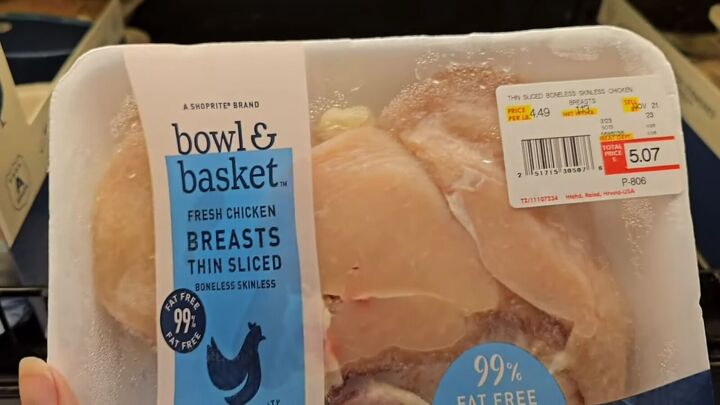



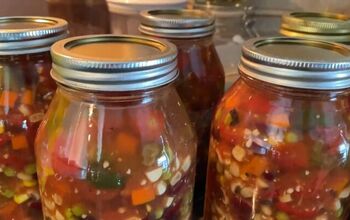


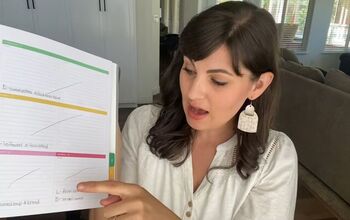

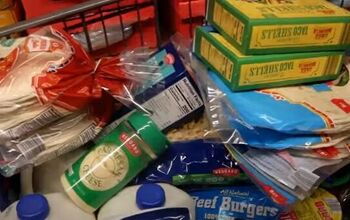




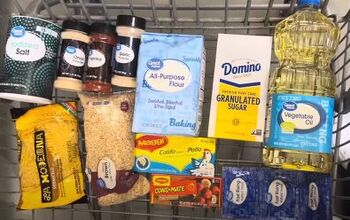







Comments
Join the conversation